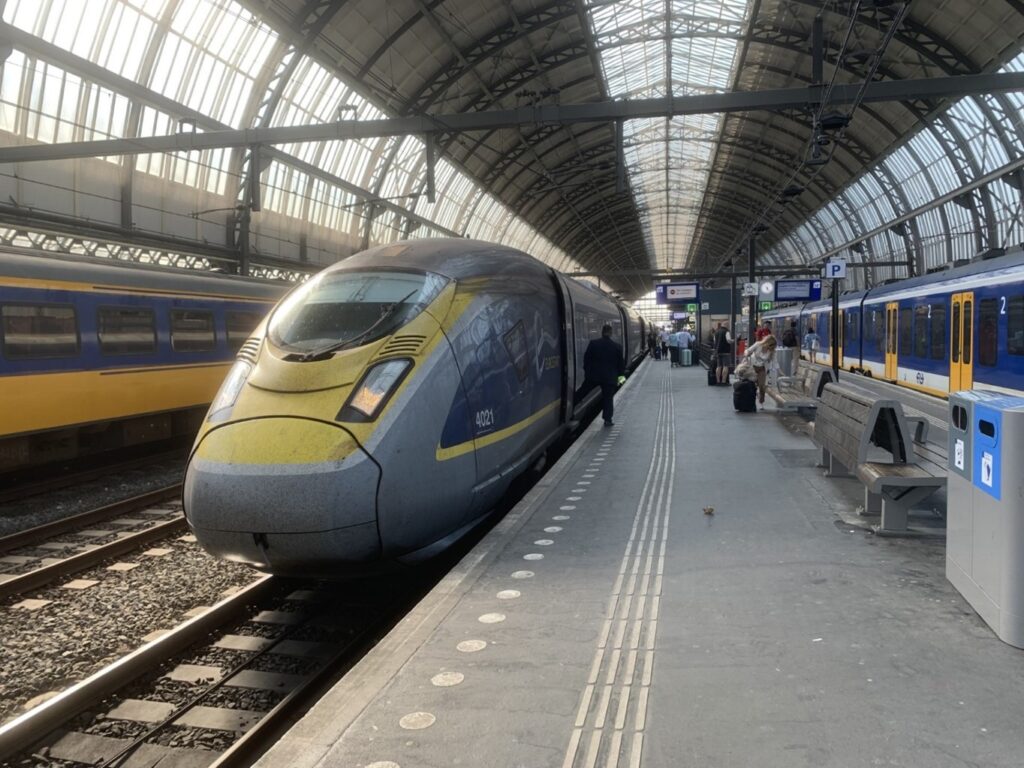'Restoring Your Railway' combines the forward-facing policy initiative of expanding the rail network - with all the economic, social and environmental benefit that brings - with a conscious use of the politics of nostalgia and loss. The next government should embrace the rhetoric and see it through.
‘Restoring Your Railway’ (RYR) is a classic Boris Johnsonism, and a good microcosm of his premiership, in that its execution was entirely focused on its rhetoric and not its delivery. The programme, first launched in January 2020 with a budget of £500m, was immediately criticised for being too small (engineers quickly pointed out £500m was about enough to open 25 miles of track).
Four years on, it has partly delivered two lines: the Dartmoor line in the South West, to Okehampton, and the Northumberland line in the North East. Both lines, physically, were mostly there already (Okehampton was part of a heritage railway, and the Northumberland line is already used by freight).
The programme to restore passenger services to the Northumberland has a long history, long predating RYR. And as of writing, it is yet to open. RYR has also delivered a handful of new stations on existing lines, and a flurry of business cases that have yet to lead to further reopenings.
It remains unclear whether, as of writing, the full £500m has been spent yet (a report from the Sun in January 2023 suggested it may be cut, though this did not seem to materialise). As Tanmanjeet Singh Dhesi, then-Shadow rail minister observed, the scheme had ‘noble aims’, but its execution hasn’t exactly achieved the ‘reversal of the Beeching cuts’.
Four years later, the promise to ‘reopen Beeching lines’ has made a reappearance in the Conservatives’ election manifesto (though without specific reference to RYR, or any specific funding). A promise to look at reopening stations and lines also features in the Liberal Democrat and Green manifestos, but no such promise is made by Labour. Perhaps this is just because the manifesto has generally avoided specific promises on rail infrastructure (there’s also no mention of HS2 or Northern Powerhouse Rail), because the party is waiting for the outcome of an independent review by Juergen Maier.
Or, perhaps, like RYR’s better-known sibling ‘levelling up’, Labour are keen to distance themselves from Johnson-era projects. But abandoning RYR may be a huge missed opportunity; it is, we argue, good policy and good politics, and Labour (or indeed any party hoping to govern) would do well to embrace it and actually see it through.
What makes RYR potentially brilliant (if done well) is the fact that it simultaneously plays to a politics of nostalgia and loss – one could even call it populist – and offers a genuinely progressive outcome of expanding the rail network, allowing more people in more parts of the country to use the train.
The economic, social and environmental benefits of expanding the rail network are laid out succinctly in Campaign for Better Transport’s 2019 report, ‘Expanding the Railways’. But what RYR does is reframes this in the context of the Beeching Axe, and the loss of railway lines in the 1950s and 1960s more generally, which left many communities across the country isolated. Many of these communities, particularly across the North and Midlands, are also communities that feel ‘left behind’ by deindustrialisation, globalisation and austerity; this narrative of ‘left-behindness’ was key to the outcomes of the 2016 Brexit referendum and the 2019 General Election.
Blyth Valley was one of the first constituencies to declare on election night in 2019, and the first of the so-called ‘red wall’ seats to dramatically turn to the Conservatives. It is one of the constituencies that will benefit when the Northumberland line opens. Other so-called ‘red wall’ seats with potential railway reopenings include Ashfield (home to the ‘Maid Marian line’), Sherwood (home to the ‘Dukeries line’), Stoke-on-Trent North & South (where MPs have both expressed support for reopening the line to Leek), Heywood & Middleton (where the line through Heywood, currently part of the East Lancashire (heritage) Railway, could be reopened to provide a commuter service), Derbyshire South (home to the ‘Ivanhoe line’) and Durham North West (a promotional video from the Department for Transport suggested reconnecting the town of Consett).
The list could go on (there is no definitive list of what counts as the ‘red wall’). In each case, as Conservative MP Kevin Foster observed, the loss of the railway has psychologically been a part of places’ sense of decline, isolation and neglect. Offering them the railway back would both materially and psychologically address those grievances.
Listening to (or reading) a parliamentary debate on the topic of RYR from January 2023, one can see how the existence of the RYR scheme is politically useful for individual MPs. Each MP took the opportunity to promote hypothetical reopening schemes in their own constituencies, whether those schemes were part of RYR or not, simultaneously demonstrating their support for reopenings in their constituencies, and (in the case of Conservative MPs) holding up RYR as an example of the Government supporting ‘left-behind’ communities.
But, as noted, the actual £500m has not gone far in materially delivering these schemes. The political benefit of promising funding for these schemes, whilst actually only delivering feasibility studies, is perhaps short-lived; people must surely start to notice that their promised railway hasn’t actually arrived yet.
Indeed, the Conservative majority won in 2019, partly on the back of promising change for the ‘red wall’, looks set to be reversed. Railway reopenings did not single-handedly determine the 2019 election result, nor will they 2024 or 2029, but they are both part of and a microcosm of the ‘red wall’ narrative that has come to dominate political discourse in recent years.
This is why, we argue, embracing and actually delivering RYR will help any future government secure support from these ‘left behind’ communities across the country. Promising RYR offers voters something tangible and meaningful. Actually proving a government’s ability to deliver and not just promise could make that support long-lasting.
And actually delivering railways will materially benefit communities with job opportunities, leisure travel, inward tourism, community cohesion (railway stations are themselves often community hubs), traffic reduction and improved air quality. Expanding the railway will also benefit the country nationally, encouraging sustainable modal shift and thus reducing carbon emissions from transport, the largest sector by emissions.
Thus RYR is not just a vote-winner in itself, but also a convincing way to sell the policy of expanding the railway in a way that is perhaps more likely to chime with the public than the flashy image of HS2 (which, for all its actual benefits, has never been able to shake off the perception problem of ‘just being a fast train to London’). Scrapping RYR now would be a wasted opportunity; the next government should run with it, and see it through.
This opinion article was written prior to David Frankal’s employment at Network Rail. This represents David Frankal’s view in his capacity as Joint Chief Executive of Enroute and should not be taken to represent the view of Network Rail or any other organisation. This blog post has partly been adapted from our report on RYR. David also presented this argument at the Better Transport Conference in June 2024, on the topic of “accelerating reversals”.



